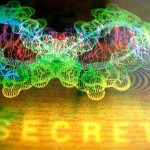
Wikimedia
It is clear that the time has come to integrate cutting-edge science and the law. In addition to the policy issues involving individuals, it is important to our nation because we must continue our leading role as the innovators of the world. Furthermore, there is a tremendous amount of money at stake for our economy. Historically, the method by which to protect the vast amount of money that is invested and earned from scientific research is patent protection. That must continue. However, a possible starting point for compromise is collaboration between scientists who invent a new and useful product, derived from biological material, and those who wish to utilize the technology to further the development of particular areas of science leading to additional inventions.
A prime example of a partnering between two groups of scientists in the realm of nanotechnology and biotechnology is that of the DNA robot. Researchers from Columbia University, Arizona State University, and Caltech have created a Nanobot that follows a programmable path on a surface patterned with DNA (more commonly referred to as DNA origami). Simultaneously, researchers from New York University, led by Ned Seeman, have combined multiple DNA devices to make an assembly line. The DNA robot picks up gold nanoparticles while navigating along a DNA-labeled surface. The details were released in the May 13th edition of Nature: http://www.nature.com/nature/journal/v465/n7295/pdf/nature09012.pdf.
Essentially, scientists are at the beginning stages of creating test-tube factories that have the potential to create self-assembling computers, rare chemical compounds or autonomous medical robots able to embark on specialized missions in the human bloodstream. “[We’re] moving from individual entities that do something interesting to systems of entities working on something with a more complex behavior and function,” says Lloyd Smith, a chemistry professor at the University of Wisconsin-Madison.
The California Institute of Technology has applied for a patent on DNA origami, invented by Professor Rothemund. NYU owns a patent on nano-robotics as a result of the pioneering research conducted by Professor Seeman. The collaborative effort of these two groups reflects the benefits that are possible through non-enforcement of patents in the early stages of scientific development. Furthermore, as a result of the partnering, it would be unnecessary for the government to get involved in the regulation of innovation. A natural outflow of a collective approach would be the development of self-regulating industry standards to shape and guide the evolution of the interaction between science and the law.

1 Trackback or Pingback for this entry:
[…] an earlier post, Nanobots, Patents, and Collaboration, I proposed that innovation through collaboration is likely the most ideal way to navigate in this […]